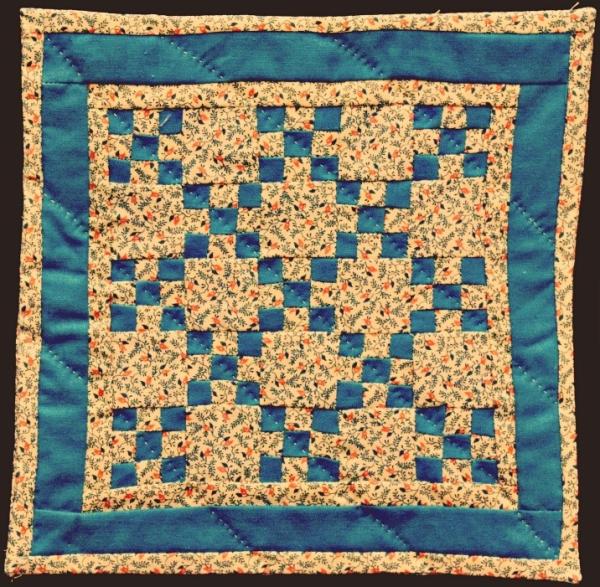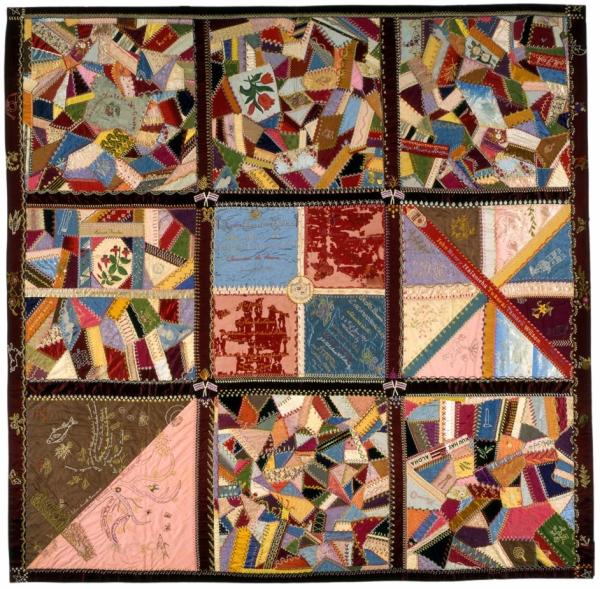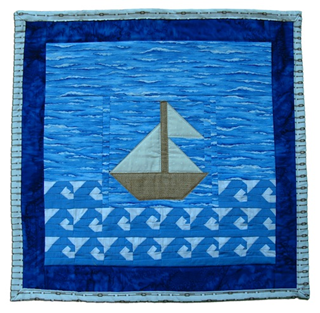Binding Together Histories in Craft: The Quilt Index

Scott, Gloria. Miniature Single Irish Chain. c1984. From Black Diaspora Quilt History Project, Black Diaspora Quilt History Project; Old State House Museum Collection. Published in The Quilt Index. Accessed: 11/06/24.
Copyright Samantha Ashley, Curator Old State House Museum, Little Rock, Arkansas, all rights reserved

Scott, Gloria. Miniature Single Irish Chain. c1984. From Black Diaspora Quilt History Project, Black Diaspora Quilt History Project; Old State House Museum Collection. Published in The Quilt Index. Accessed: 11/06/24.
Copyright Samantha Ashley, Curator Old State House Museum, Little Rock, Arkansas, all rights reserved
What makes you feel cozy during the winter? Among the first things that come to mind might be a fireplace, the feeling of a warm mug in your hands, a handknit scarf, or a special quilt. The fibers in our lives carry meaning, and quilts especially bear the stories of the people who made them, the fabrics within them, and the designs upon them. For many people, the holidays are a season of craft. Craft works are very often made in community, even collaboratively, forging links to the people around us and between generations in both process and product. In reminding us of our connections to each other and by imbuing beauty and skill into purposeful objects, they bring us to the humanities often in very personal ways.
In the early 2000s, the National Endowment for the Humanities made three grants to help build the Quilt Index, an online database of quilts developed and hosted by Michigan State University through Matrix: Center for Digital Humanities and Social Sciences. The index digitally unites quilts that are geographically dispersed among public and private collections worldwide. An award in 2021 for the Black Diaspora Quilt History project contributed new quilts, ephemera, oral histories, and expanded metadata to the database to build the representation of African American, African, and African diasporic quilt history.
Let’s explore together a few of the stories that these quilts have to share:
Sometimes quilts provide a window into the lives of everyday people with extraordinary talents. This Stove Eye/Red Spots pattern quilt was made by Mary Atkins, an African American woman who was from rural Arkansas and learned how to quilt in her childhood. She settled in Kalamazoo, Michigan, and created this quilt around 1970. This entry was added to the database as part of the Black Diaspora Quilt History project, which helps to cement Mary Atkins’s and many other diverse creators’ places in our cultural record.
Sometimes, quilts mark a significant historical moment through their creation or imagery. Queen Liliʻuokalani, the last sovereign monarch of the Kingdom of Hawaiʻi, created this quilt in 1895 while she was imprisoned after an unsuccessful attempt by supporters to restore her to power. Her companion, Eveline Melita Kiloulani Kaopaokalani Wilson also contributed to it. These are details we know because of an embroidered inscription. If you’re interested in learning more about Indigenous creators, you might like the index’s North American Indian and Native Hawaiian Quilt Collection.
Sometimes, quilts’ designs are deeply symbolic. This one, “Fair Winds and Following Seas,” was made by Michelle Welsh, a military wife. In it, you’ll see 20 waves, one for each year of her husband’s service in the military. The quilt’s title holds meaning, too. She writes: “In civilian language it means ‘Wishing those departed a safe journey and may the best of circumstances be with you. Good luck.’”
You can browse this rich resource for inspiration and appreciation or use it to study in depth the history and significance of quilts and quiltmakers in history. We hope that it virtually brings you to a cozy place in this season of craft and brings connection anew to the material culture all around you.
Did you know that you can add quilts to this resource? More information can be found here.
Are you seeking funding to develop a digital database such as this? The Quilt Index was funded through the Humanities Collections and Reference Resources program.


